At some point or another, every business has to create forms. Whether you’re gathering feedback from customers or setting up the office potluck, forms likely play a part in your daily operations. Form-building solutions can make things a lot easier for you, but with so many options available to choose from, you might be unsure about which solution will best suit your needs.
In this guide, we’ll compare two of the top form builders on the market: SurveyMonkey vs Google Forms. We’ll analyze each of these solutions using a series of helpful criteria so you can make an informed decision that will benefit your organization. Follow along to learn more about what each one offers and why an alternative may be your best bet.

Looking for the best alternative to Google Forms?
Jotform’s full-featured form-building solution is mobile-friendly and has the most integrations in the industry. Use it to collect payments, automate workflows, gather leads, and more.
SurveyMonkey background
Originally built in 1999 as a survey creation and distribution program, SurveyMonkey has rapidly become one of the most popular survey solutions on the market. Today’s SurveyMonkey does much more than the original version. Over the years, the platform has evolved into a tool to help users optimize marketing campaigns, customer experience, employee engagement, and HR processes.
Google Forms background
Google Forms is a free, straightforward online form builder. It was first made available in 2008 as an add-on to Google Sheets, and now Google Forms is a standalone tool that provides form creation capabilities. Although it may not offer all of the features that some of its competitors do, there are plug-ins available to supercharge the otherwise basic platform.
Who uses SurveyMonkey most?
SurveyMonkey’s user base varies widely. Due to the advanced features and marketing capabilities included with its paid versions, SurveyMonkey is a favorite among both small and medium-sized businesses (SMBs) and large corporations alike. Although beginners may find value in the free version, the features included are too basic for extensive business use.
Who uses Google Forms most?
Google Forms is the first choice for most beginners. It’s part of Google Workspace, which you likely already use, so adding this solution to your toolbelt is easy. Without any paywalls or other barriers to access, it’s a no-brainer for those who just need basic forms. However, its capabilities typically won’t meet the needs of a larger organization.
Key features of SurveyMonkey
SurveyMonkey has a wealth of features, especially compared to some of its competitors. Although the price tag and learning curve may deter some less experienced users, larger businesses will benefit from its advanced capabilities.
Some of SurveyMonkey’s key value drivers include
- Advanced data-export capabilities
- Logic branching and A/B testing
- Team collaboration features
- Customer experience and feedback solutions
- Enterprise-level admin options
If you are interested in exploring alternatives to SurveyMonkey, you can check out our article that delves into various survey tools and their features.
Key features of Google Forms
While Google Forms has a number of advantages, it’s known for a few key features:
- Form templates
- Task automation
- Easy form creation
The lack of a paywall truly is the main advantage to Google Forms. With universal access and no fees, it’s the first choice for millions of users.
Common features of SurveyMonkey and Google Forms
Although SurveyMonkey and Google Forms have their differences, the basic features they offer aren’t that different. Both are form builders, which means they offer features such as
- Form templates
- Data analysis
- Customization features
- Easy distribution methods
- Data export
Where the two differ is in the complexity of these features. While you can access more advanced features through SurveyMonkey, they do come at a cost. However, those advanced features aren’t an option in Google Forms.
Unique features of SurveyMonkey and Google Forms
While these programs share several similar features, they each also have differentiators that provide extra value to their users. Consider which matches your needs best before making your decision.
Google Forms
- Optimized integration with Google Workspace
- Completely free to use
SurveyMonkey
- Marketing material creation through TechValidate
- Expert-written survey templates
- More than 100 integrations
- Available API access
SurveyMonkey vs Google Forms: Side-by-side comparison
When you’re looking for the right form builder for your organization, there are a few key elements that any program you consider should have. However, some platforms offer higher quality versions of these features. Consider each of the following features and how they compare in a SurveyMonkey vs Google Forms matchup.
Ease of use
Both programs have their own challenges when it comes to usability. Google Forms is easier to use on desktops than mobile devices. In addition, part of its ease of use comes from its limited functionality compared to SurveyMonkey. However, without proper training, you may find that SurveyMonkey’s interface has a steep initial learning curve, and that can be frustrating for less experienced users.
Integrations
Each solution has a similar set of integration capabilities. The only disadvantage for Google Forms is that many of its plug-ins are developed by third parties and aren’t regularly maintained to guarantee performance. SurveyMonkey has more advanced integrations, which is one reason many large organizations use it. This includes customer relationship management (CRM), Microsoft, and Google integrations, to name a few.
Functionality
SurveyMonkey takes a significant lead when it comes to functionality. Google Forms has adequate features for the average single user or small business, but larger teams won’t get nearly as much use out of it. SurveyMonkey also has a wide range of complex features that allow you to customize your forms and get the most of your data.
Feature versatility
SurveyMonkey’s feature versatility is yet another major advantage it has over Google Forms. It offers everything from automated marketing material creation to online payment capabilities. Google Forms, on the other hand, has basic options that work for many users, but they provide little benefit to those looking for more than simple form creation.
SurveyMonkey vs Google Forms: Pricing
The main difference between these two programs is price. Although SurveyMonkey offers a wider range of features, offering a free, fully capable form creator gives Google Forms a definite leg up with users who just need basic features.
SurveyMonkey pricing
SurveyMonkey’s greatest drawback is its cost. While it does offer a free plan, it only includes basic features. SurveyMonkey’s paid plans are split into three categories: individual, team, and enterprise. Enterprise pricing is customized based on an organization’s needs and size, so you’ll need to request a quote.
The most basic personal plan starts at $99 per month. However, beyond that, the pricing gets a bit confusing. The next plan is only $39 per month, but you have to pay for a full year at once. From there, pricing increases again to $119 per month for the Premier program, which is also billed annually.
Team plans are much more straightforward, but the cost adds up quickly according to the number of users you have. There are two plans to choose from. Team Advantage will cost you $25 per month per user, while Team Premier will cost you $75 per month per user.
For those thinking about using the team plan for just one user to save money, think again; team plans require a minimum of three users.
Google Forms pricing
As previously mentioned, Google Forms is free, but if you want to use it as part of your business or enterprise, it’s available through Google Workspace, starting at $6 per user per month.
SurveyMonkey vs Google Forms: Pros and cons
We’ve covered the key features and benefits each of these programs offers, but here’s a high-level breakdown of their advantages and disadvantages.
SurveyMonkey pros and cons
Pros:
- Advanced features and functionality
- Powerful forms with hundreds of integrations
- Enterprise-level capabilities
Cons:
- Advanced features available only with paid plans
- Initially challenging to learn
- Limited functionality with the free version
Google Forms pros and cons
Pros:
- Fully integrated with Google Workspace
- Completely free to use
- Easy to understand
Cons:
- Basic features
- No native mobile app. If you need a mobile app in Google Workspace, you can try the Mobile App Creator by Jotform.
- Third-party plug-ins can be unreliable
User reviews for SurveyMonkey and Google Forms
Some of the best resources to help you decide on a survey tool are user reviews. Check out some of the top reviews for SurveyMonkey and Google Forms from actual customers.
SurveyMonkey user reviews
- “We are very satisfied with the open rate of the survey that we are launching, it is the best that we have with any survey software.”
- “Overall experience has been great. I’ve been filling out a lot of surveys lately using this and have good luck with the outcome.”
- “It has been a great way to get feedback and to be able to keep it anonymous. This is the only true way to get honest feedback that allows you to implement changes and better your company.”
Google Forms user reviews
- “We have a growing team with growing pains and Google Forms has been a great addition to our routine. We can poll our team and find topics to teach and what we can do to impact them better.”
- “I love how easy it is to get and send important information through this. The forms are easy to create.”
- “Google [Forms] definitely solved a problem that was noticeable in the survey market. I like how you can make it anonymous or not; and that it’s super easy to create with a google account.”
SurveyMonkey vs Google Forms: Overall comparison
| Features | SurveyMonkey | Google Forms |
|---|---|---|
| Price | Free with limited features. Individual plans: $99 per month, $39 per month (billed annually), or $119 per month (billed annually) | Free, or starting from $6 per month for Google Workspace |
| Unique features | API, automatic form building tools, question templates, and more | Fully integrated with other Google Workspace tools, free access to all features |
| Pros | Advanced features, powerful forms, enterprise-level capabilities | Free, Google-optimized, easy to use |
| Cons | Complex, expensive, limited free version | Basic, no mobile app, limited integrations |
| Ease of use | Initial learning curve for advanced features | Simple, easy to use, limited |
| Functionality | Capable of advanced functionality with paid versions | Functional but limited |
| Feature versatility | Advanced capabilities | Basic form features only |
| Integrations | More than 100 integrations | Google Workspace Marketplace plug-ins |
SurveyMonkey vs Google Forms alternative: Jotform
If neither of these solutions seems like the perfect fit, then it’s time to consider an alternative. Online form builder Jotform is designed to provide a full-service solution for every user, regardless of their business size or needs. Building forms is simple with Jotform’s drag-and-drop Form Builder. If you don’t have time to build yours from scratch, you can choose from more than 10,000 available templates.
Aside from form-building capabilities, Jotform users also have access to the full Jotform suite of tools, including
- Data analysis and organization with Jotform Tables
- E-signature collection with Jotform Sign
- More than 100 integrations with third-party apps
- Marketing report generation through Jotform’s Report Builder
All these features are available with a free account, but to get more out of Jotform, you can go with one of its paid plans. Plan pricing is as follows:
- Bronze: $34 per month
- Silver: $39 per month
- Gold: $99 per month
- Enterprise: custom pricing
The choice: Complexity vs budget
Each of these survey tools is effective and provides similar services for your organization. However, when it comes time to decide between SurveyMonkey vs Google Forms, your choice will likely depend on how complex your needs are — and what your budget is.
If you’re a small business or an individual looking to create simple forms, Google Forms will likely suffice and save you money in the process. However, if you’re a larger company or want to get more from your forms, SurveyMonkey will be worth the extra cost. If you’re looking for a happy medium, alternatives like Jotform can offer the best of both worlds.








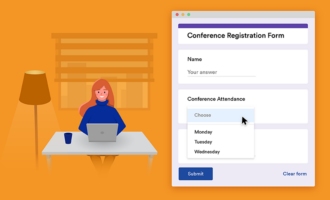




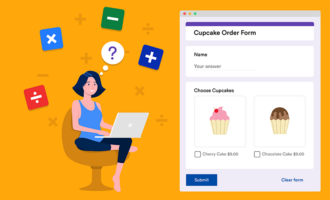





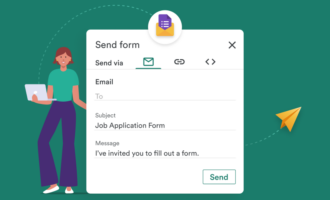
















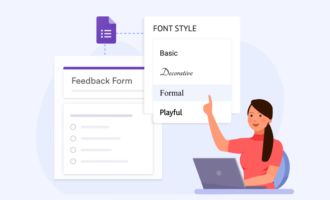
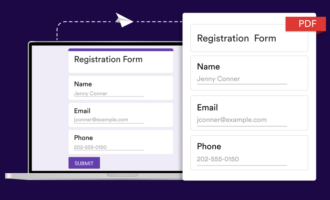









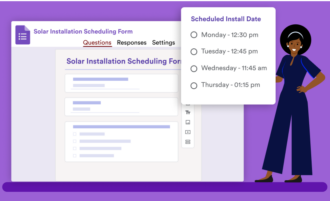

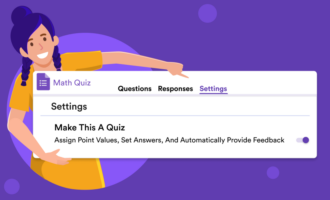






















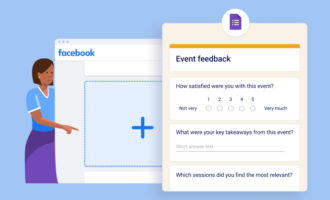
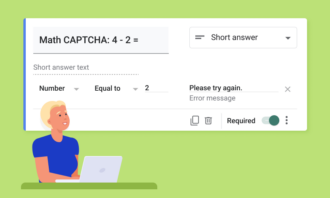




























Send Comment: